篳路藍縷,以啟聖廟

壹、開堂 (1899-1913)
一、請 · 立香位
三芝智成堂文武聖廟(以下簡稱本堂)距今120年前得以開基立堂,應該歸首功於本鄉先賢、前清秀才、漢學先生郭石定。
他風聞淡水屯山古聖廟五聖恩主甚為靈驗,央得小基隆街善士、鄉紳張子清及江盛元的支持及協助。從三芝街庄跋涉山水、越過峻嶺,來到淡水屯山古聖廟芝蘭行忠堂,刈取恩主公香火,迎請五聖恩主牌位回鄉敬拜。
在日據明治32年(1899)1,將之奉祀於小基隆埔頭街的福成宮媽祖廟旁曾林甘娘宅,定堂名為「智成堂」。
雖然暫厝於民宅,但是開放供大眾前來敬拜關聖帝君、孚佑帝君、司命真君、豁落靈官及岳武穆王等恩主公,成為小基隆街庄主要信仰之一。在當時,是本鄉老街的大事;贏得諸多街紳、士子、商紳的認同及行動支持。
主要襄助者有:楊峻德、郭木生、曾瑞樹、曾石岳、郭明德、黃見龍、張維塗、張迺爵、楊維城及蔡成金。
一時之間,本堂人文薈萃,群賢畢至。效勞生、鸞生皆奉五聖恩主為神、師。在日本統治的年代中,以扶鸞濟世,弘揚並傳承儒教為主,輔以釋、道兩教義理,保留了漢人文化的命脈。

二、開堂 · 著經 · 濟世
隔年(1900)農曆4月26日,以郭木生為正鸞,郭石定為堂主兼副鸞,楊維城為副鸞生,張維塗、郭明德為左鸞生,楊藻錙、郭淇水為右鸞生。從4月至10月,日以繼夜,敦請三教列聖仙佛降鸞。耗時半年餘,終於著造「正、心、修、身、克、己、復、禮」等8章的《節義寶鑑》。仙佛諄諄教誨鸞生、世人,人生在世應該多行善積德,以便來世成神、列入仙班。
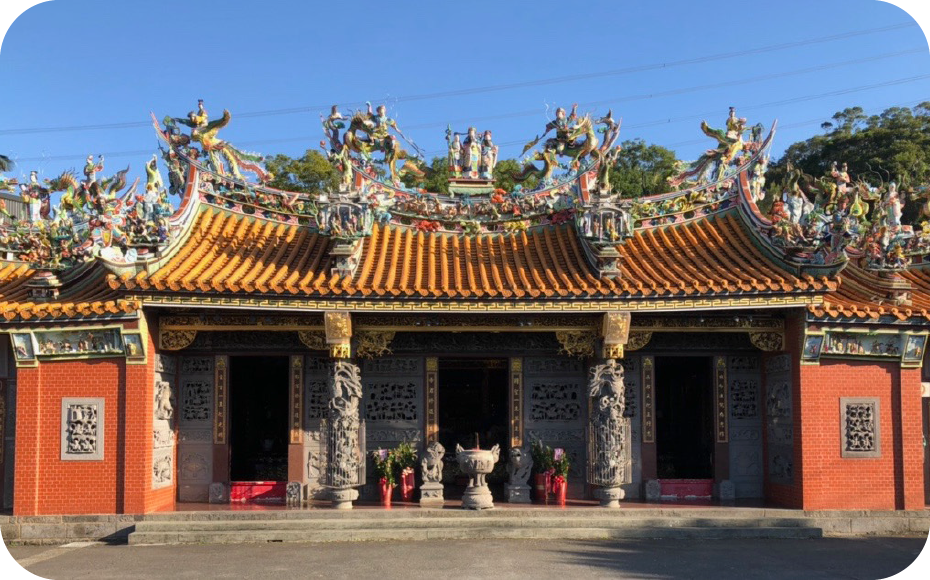

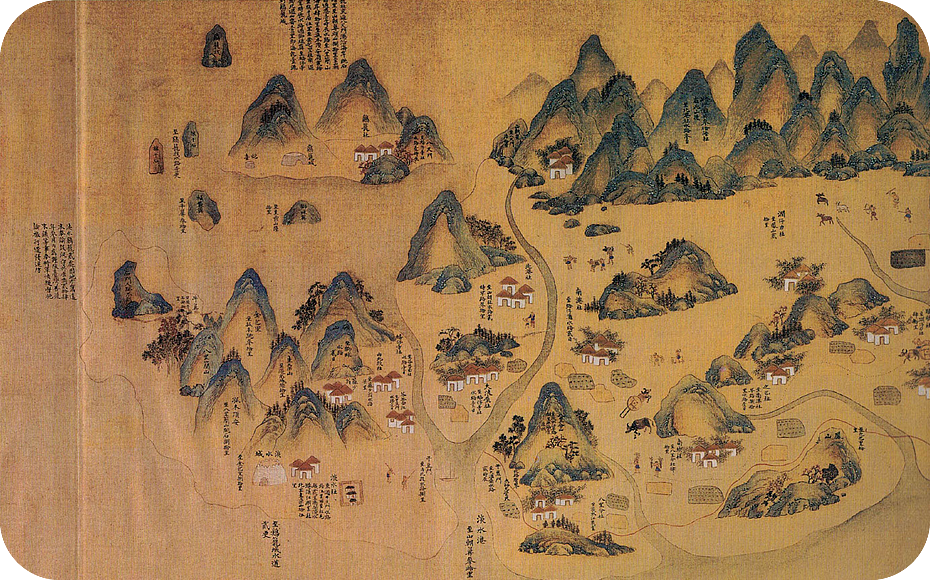

經扶鸞濟世14年,信徒日多,鸞務日興,原有場所已經不敷使用,堂中領袖對尋覓新地蓋新廟意見紛歧。乃於大正2年(1913)清算廟務基金分家,堂分小基隆、錫板兩地。五恩主牌位,暫留小基隆張子清宅;郭石定等人,乃前往錫板另立新堂。


貳、立廟 (1913-1969)
一、堪輿 · 擇地
廟分兩處後,主張設立新廟的重擔,落在郭石定、楊峻德、楊元章等身上。乃邀請楊救貧仙師擇地,終於找到錫板溪下游溪畔,一塊「田螺吐肉」的風水寶地。眾人決定後,再由勘輿師楊元章「定分金」,以座東北朝西南之姿建立廟堂。
廟宇背倚錫板村內一座狀似「田螺」的圓丘,廟宇基地位在丘陵往前延伸的平地,貌似田螺正在「吐肉」。在其前面,連接蜿蜒而過的錫板溪,象徵田螺經年累月吐出舌頭沾黏溪水,滋養田螺,而孕育了此吉地。
不僅如此,廟的左側兩座山,型似「兩獅相馳走」護衛。右側的平原,錫板溪曲折流過,緩緩注入大海,卻只見溪流,又未見出海口,此又像「龜蛇把水口」。意味錫板溪水雖湍急,卻被留了下來,孕育本地的人才,留下本地的財富,代代相傳、生生不息。
歷經1年餘的擇地、興建,終於在大正3年(1914)9月27日奠基,11月16日竣工。完成面寬三間,深一落,素樸雅緻的鸞堂。在日據時代,堂址為:芝蘭三堡淡水郡三芝庄錫板海尾(現址:新北市三芝區錫板里5鄰海尾17號)。堂號:持續延用本堂舊名「智成堂」。
立即迎五聖恩主香火,行安座大典。本堂新成,在當年是本鄉最重要的五恩主信仰,也是北台灣最具代表性的「恩主公廟」之一。
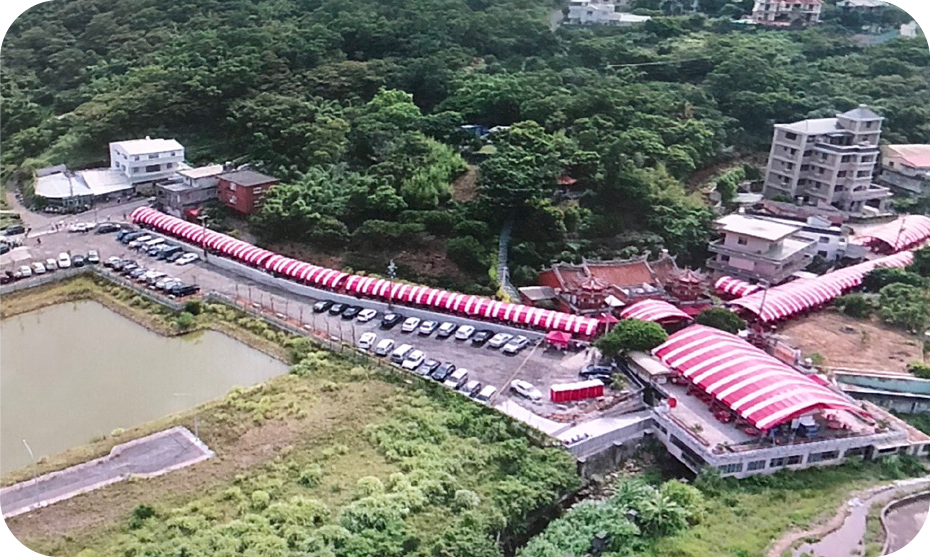

二、訓鸞 · 宣化
廟宇落成,仍請迎五恩主牌位香火及立廟有功勞的郭石定為首任堂主(1913-1917),他欲持續揮鸞濟世,卻苦無鸞手來堂服務。
大正4年(1914),經鄉先輩推薦楊元章2之子,16歲的楊明機及楊峻德之弟楊善慶,前來本堂接受「訓鸞」。
身為基督教宣教士的楊父,根本不相信自己的兒子可以被恩主公或眾仙佛揀選,教導、啟迪成為正鸞手。未料,出現了奇蹟,楊明機在經過4個月的訓鸞,得到恩主公的加持而天啟、開竅,不但能出口成章,並開始扶鸞、濟世。1。

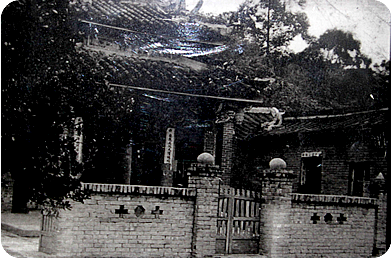

此時,一顆鸞堂界的「新星」在本堂誕生了,也改變了楊父的信仰,他從基督教信仰,改皈依在恩主公座前,成為虔誠效勞生。而楊明機在未來40年的歲月裏,通靈書寫10本鸞文,證明他是日據、國府時期,台灣本地鸞界最傑出、最優秀的鸞手之一。
在楊明機逐漸展露頭角之際,郭石定撒手人寰,乃由本鄉保正,在地地主、漢學先生-楊峻德,在大正6年(1917)接任第2任堂主(1917-1939)。他接棒主導了大正8年(1919)7月本堂鸞書著造的重責大任。依舊由楊明機主鸞,楊善慶擔任副鸞手,協助揮鸞。
代天宣化百餘日,三教仙佛降臨本堂,降筆書寫第2本鸞書《救世良規》。既弘揚恩主公信仰,也提升了本堂聲譽。
於本堂領袖皆為儒生,又用扶鸞降下儒教道德律為主的詩文勸世。為了敬拜孔子,乃於大正9年(1920),在楊峻德主導下,比照孔廟或文昌祠,安奉「大成至聖先師孔夫子神牌位」,供鸞生、信眾敬拜。
為了行善濟世,楊又在昭和元年(1926)創「三芝庄慈善會」,從事本庄救濟貧苦、改良風俗、社會教化的宗教慈善事業。
此時,對楊明機而言,他已思考往外發展,尋找更寬廣的鸞堂世界。他決定在大正14年(1925)來到台北民權西路,創立贊修宮;大正17年(1928)遷移到中山北路。昭和4年(1929)他再度與本堂合作,共同扶出《清心寶鏡》。
之後,本堂鸞務因缺乏鸞手而暫停,楊峻德則於昭和14年(1939)先逝,堂務在後繼無人的窘境下,本堂一度呈衰敗之勢。
三、重整 · 再造
直到二次戰後,民國40年11月(1951)才由張添財、楊善慶提議,重新整理堂務。當時,鄉賢杜家齊、杜麗水分別卸下淡水鎮長,本堂先賢乃邀請杜家齊擔任第3任堂主(1951-1959),杜麗水為副堂主,希望借重其聲望、人脈,再度提振鸞務。
為恢復本堂過去光榮的鸞務歷史,杜氏叔、侄兩人在民國45年(1956),敦請本堂培育出來、當時聲望正隆,儒宗神教最高領袖「統監正理」楊明機,再度返鄉主持扶鸞。
楊憑其聲望,召集台灣北、中、南三地鸞界的鸞生,在當年4月至6月,通靈寫出膾炙人口、具重大影響力的《六合皈元》。此時,楊明機已有57歲,本書是他通靈書寫的第10本鸞書。既是在本堂第三次造書,也是他畢生最後一本作品。
此外,在同年8月,本堂接受楊明機「制度性」鸞堂的建議,再度出版他在昭和11年(1936)書寫的《儒門科範》。該書內容頗為豐富,規劃孔子神殿祀位擺設,祭孔釋奠典禮的程序、音樂,各神祇聖誕使用的祝文、祭文、表文,超度祖先的牒文、疏文,每日禮眾神時課誦的寶誥、經典等。
這是儒宗神教少見的科儀著作,也是楊明機畢生希望將恩主公信仰祭典禮法制度化的夢想。在本書再版後,索取者眾,一時之間,洛陽紙貴。此書對本地鸞堂產生重大的影響,也再次提升本堂的聲望。
民國48年(1959)張添財接替為第4任堂主,延續前賢勸人行善、代天宣化的傳統,鳩合善信、鸞生資金,刊行楊明機於昭和9年(1934)在斗南感化堂書寫的《覺路金繩》。
參、擴建 (1969-1996)
一、整修 · 改建
時序推演到民國58年(1969),離初立堂已有55年之久,本堂廟貌已呈破舊。此時,我國優秀的世界級高爾夫選手謝永郁的母親-謝盧燕,在行天宮北投分宮-忠義廟效勞。據耆老回憶,她是該堂虔誠的鸞生,卻得到行天宮玄空法師的指引,前來本堂協助修廟。
她以一介女子,憑著堅定的信仰,鍥而不捨的投入整建工程。每當工程告一階段需款孔急時,她傑出兒子謝永郁就贏得比賽獎金,彷彿得到恩主公的庇蔭。就把部分獎金寄給母親,解修建廟宇費用的燃眉之急,而留下一段美麗的佳話。
當她認真投入修廟的行徑,感動了鄉親,而共襄盛舉。例如,在本堂入口處聳立的「山門」,就留下她及楊美津、蔣華美及楊敬治等4人的芳名。
歷經3年多的修建,終於在民國61年(1972)10月6日,完成了本堂的正殿、拜殿及山門整建,本堂廟貌為之煥然一新。而這次修建,也奠定本堂現在神殿的基本規模。
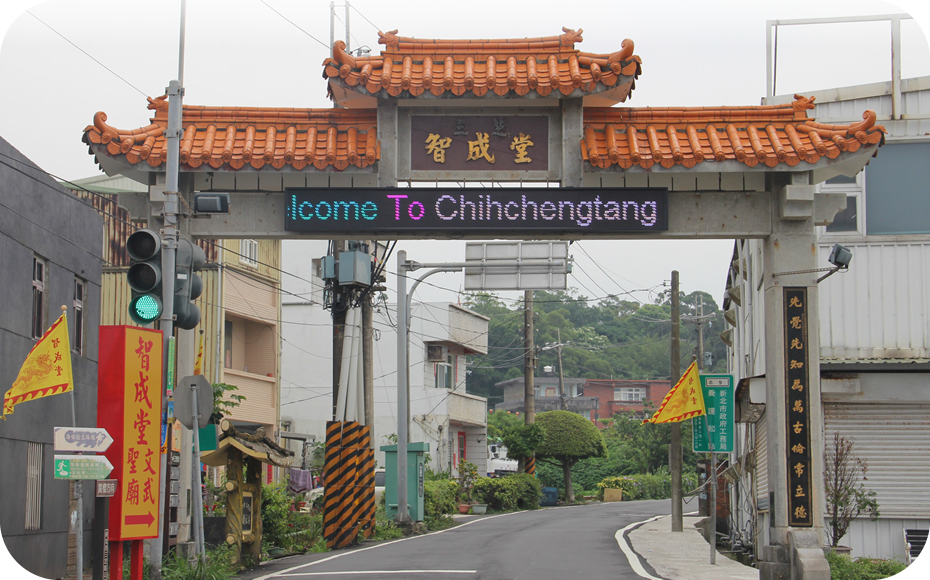
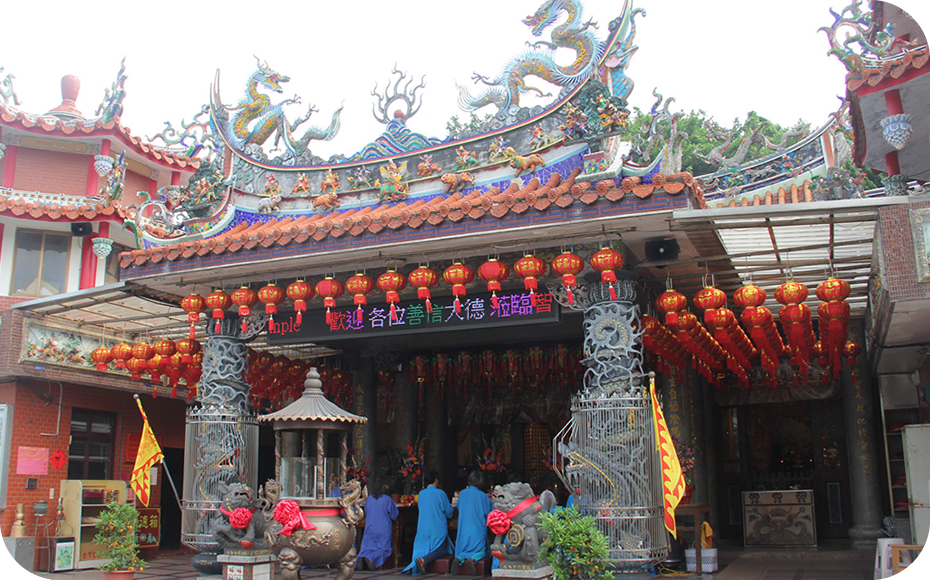
二、重刋 · 登記
民國67年(1978),本堂禮聘三芝鄉前鄉民代表會的副主席楊寬裕為第5任堂主(1978-1984),而原堂主張添財退居副堂主來輔佐之。
民國72年(1983)春,本堂與兄弟宮-財團法人智成忠義宮合作,共同召集海內外信徒,重刊本堂第一本善書《節義寶鑑》。並商得當時的立法院院長倪文亞及監察院院長余俊賢,分別為本書在封面、封裏書題「書名」,引為美談。
本堂為了強化廟務組織,思考向政府申請「寺廟登記」。在民國73年(1984)7月30日,從較為鬆散的「管理人」制,改為「管理委員會」制,向政府正式登記為「合法寺廟」。
本堂頭人遴選委員及監察委員,組成管理委員會,並推薦本鄉擔任2、3、5、6等四屆鄉長的楊彩南,來堂擔任改制後的第1屆主任委員(1984-1988),後來他再續任第2、3屆(1988-1996)。

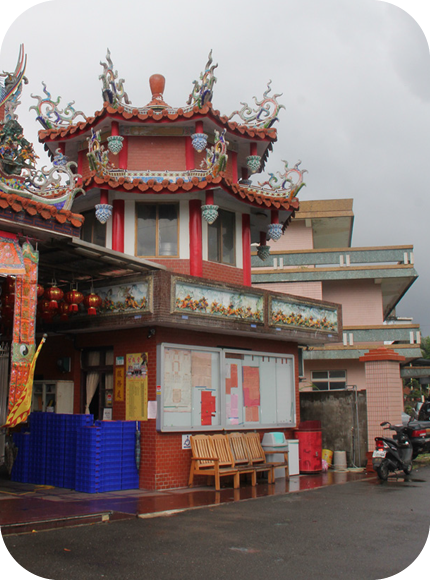
三、增建
在楊彩南任內,完成了本堂土地過戶,神殿整修、擴建、神殿後方公園及活動中心、停車場新建等工程。為本堂增建更為寬廣神聖、世俗空間,奠定未來辦理大型活動的基礎。
首先,商請口頭承諾捐地蓋廟的地主,將土地過戶給本堂。在民國76年(1987)得到地主楊寬裕捐212坪、楊李呅捐97坪、楊玉明捐12坪、林逐捐42坪,共計363坪。隔年春天將之芳名鐫刻於石碑上,永銘誌謝。
其次,他在民國77年(1988),號召信眾共同捐款,整建左、右兩廂的鐘鼓樓,並安置電動的鐘、鼓設備,及整修內殿、拜亭,終於在隔年底(1989)完工。
之後,配合三芝鄉公所的社區營造計畫,得其補助,並得到委員、善信的捐輸修築約200階的環山步道,及在圓丘頂設一涼亭,將本堂後方的「圓丘」闢建為公園。
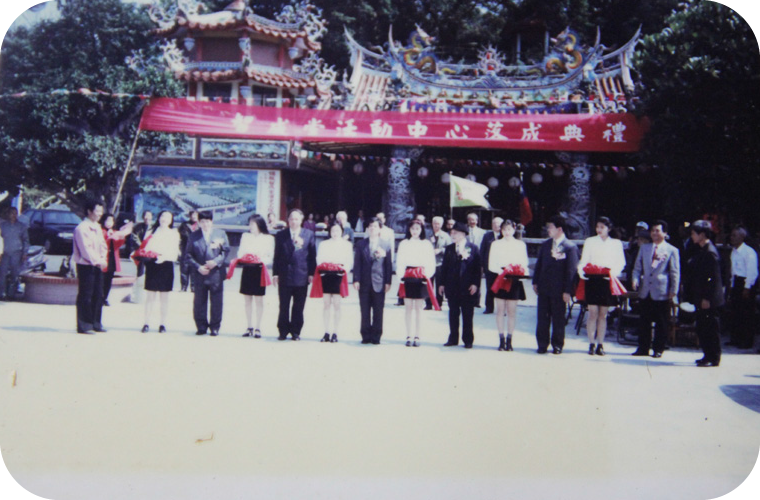

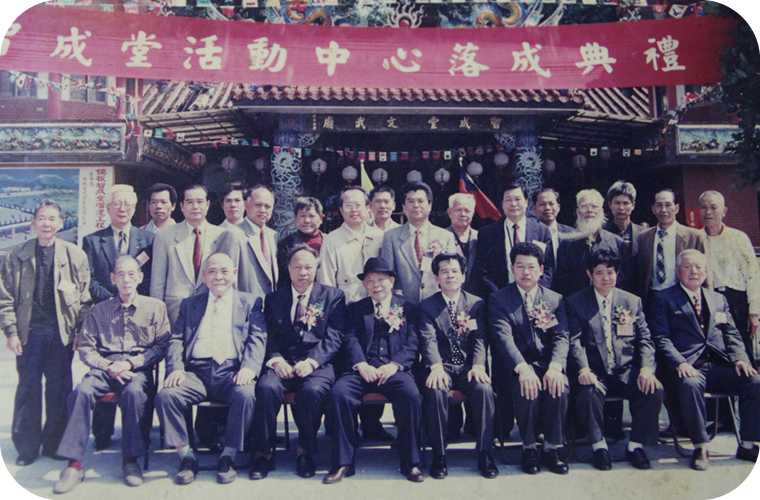
為了因應時代需求,日益增多的香客停車及增加辦理活動的空間。楊主委在委員會群策群力下,決定在民國84年(1995)再度動員信徒鳩資,投入「活動中心暨停車場」的建設。
消息一出,得到本地鄉紳、企業家、信徒諸多迴響,短期內募得新台幣至538萬5千元。在當年農曆3月動土,12月完成寬廣的廟埕停車場及地下一樓約400餘坪的室內活動中心。
建設前,充分考量本堂前面既有的地形、地物。以不破壞本堂前開闊視野、風水的原則,將建築物主體地下化。並跨越錫板溪,往前延伸,大幅度增加本堂使用空間。從此之後,本堂一勞永逸的解決停車及辦理各項活動,空間不足的問題。
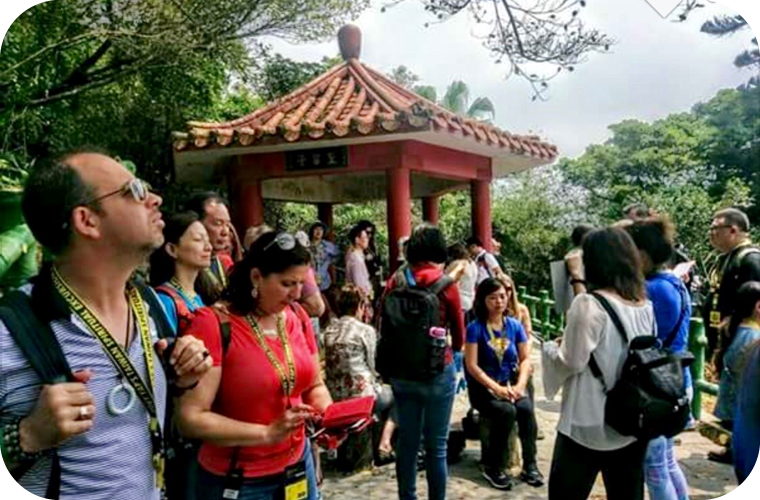
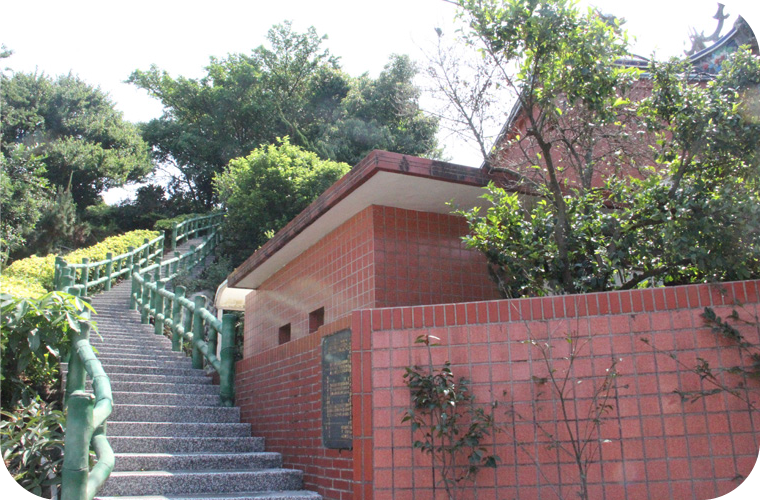
肆、發展 (1996-2019)
一、合法
民國85年(1996)楊寬裕再回任第4屆主委(1996-2000)。在常務監察委員張彩南的建議,依法補正民國73-89年(1984-2000)的會議紀錄、財務報表等資料,終於在民國89年(2000)得到台北縣府的核可。選出合法改制後的第一屆管理委員會,主任委員楊信男在當選後連任2-4屆(2000-2010)。
為配合電腦E時代的來臨,及本堂行銷的需求,在民國97年(2008),本堂進入資訊化階段。除了設置官方網站行銷外,也運用電腦軟體建構本堂信徒、組織、儀式疏文、捐款、報名參加儀式等資料。便利本堂組織運作,及財務、儀式的管理。

二、開放
在楊信男任內,本鄉旅居加拿大紳士楊順復,在民國96年(2007)熱心投入本堂委員會,擔任委員志工。民國99年(2010),他被推薦為第5屆主任委員。此後,他以謙沖為懷,積極任事的態度,逐步改革,被諸多委員肯定,連任6-7屆(2010-2019)。
為了讓本堂更親近信徒,推薦本堂給社會大眾認識,委員會決議調整本堂硬體,並參與多項社會、公益、宗教、文化活動。
在本堂部分,委員會決議於民國105年(2016)農曆3月27日拆除堂前的圍牆,再次打開本堂。在同年農曆6月13日,重新為天公爐安座。讓本堂外觀更形開闊;直接連結堂前廟埕,隨堂前馬路往右延伸至淡金公路邊,本堂的山門。此外,得到羅簡秀子捐地50.56坪、楊騫捐地2.9坪。本堂廟宇建築物並於107年3月2日取得新北市政府建築使用執照,成為合法廟宇。
在社會部分,於105年(2016)率委員會參加「首屆萬民看媽祖論壇」,並在隔年(2017),與本地著名關帝廟、台灣宗教與社會共同主辦「二屆舞動關老爺論壇」,再次與大眾結關帝情緣。
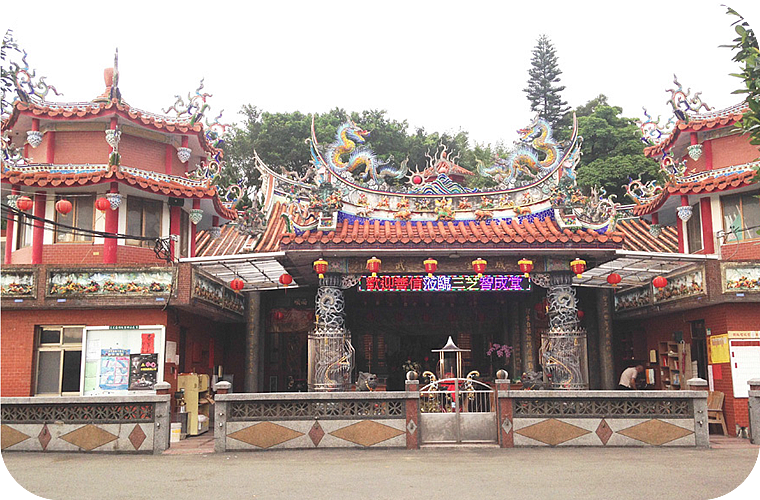



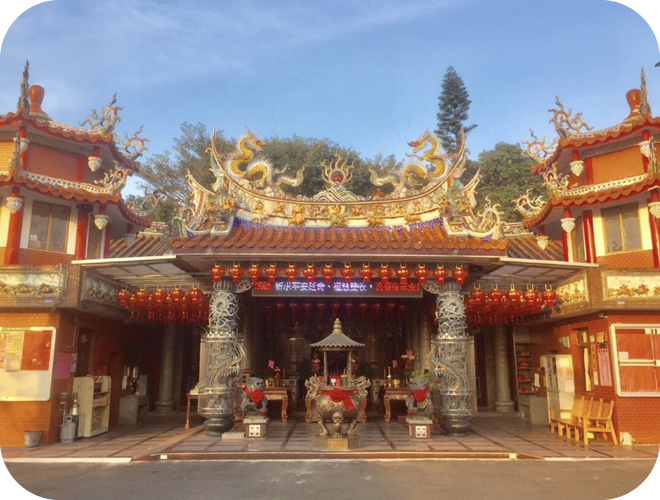
三、認養 · 千人千壽復古揮毫
為了綠化本堂山門到本堂廟埕間,沿著錫板溪畔的6,451平方公尺的公有空地。本堂得到三芝區公所的同意,負責認養這片長條狀的畸零地。在此地上,本堂種植、修剪花草樹木,使它成為綠帶。當信徒進入山門,就彷彿進入了本堂的廟埕花園。

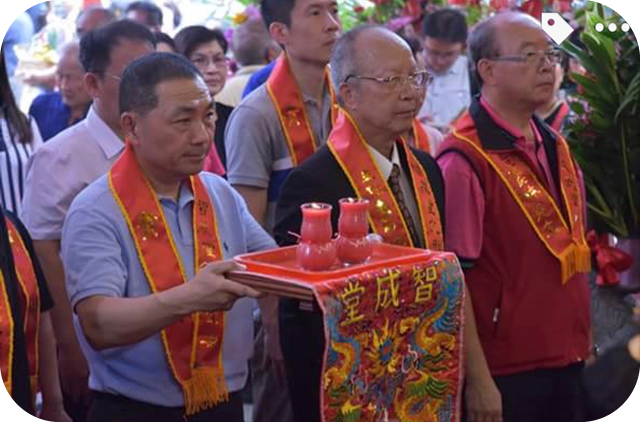
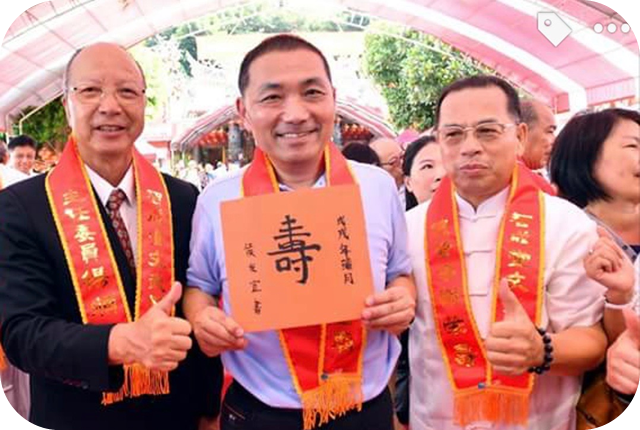
民國107年(2018)本堂就運用廟埕廣場、周邊馬路及認養的綠地,辦理「千人書寫千壽」行銷本堂。在7月7日,本堂冠蓋雲集,新北市副市長侯友宜、李四川等政要蒞臨,及大力促成本活動的新北市政府顧問暨新北市道教會理事長謝榮壽、三芝區區長林克文、福成社區發展協會理事長鄭國賢、芝蘭社區發展協會理事長劉淑芬、三芝區里長聯誼會會長楊振蜂及各里里長、書法大師謝瑞煌等人的協助;並在本堂委員會召集、動員信徒、交陪友宮、機關、學校、社團多個單位,計有男女老少約2,433人參加。在當下,計有2,023人以毛筆同步書寫在自己的紅瓦片上。

大夥既為自己寫下見證,也打破了2017年外蒙古1,260人共同書寫紀錄,而獲得「金氏世界紀錄」肯定,並頒發證書。
未來,本堂將在認養的綠地,設立「千人千壽」公園。而會把這些書寫「壽」字的紅瓦,佈置其中;使本公園成為三芝的特色景點之一。
由於此活動已經列入世界紀錄,現在寫入本堂史冊,俾供來者永遠留念。未來公園建成時,讓參與者重遊故地。或信徒來本堂參香時,也可在公園中尋找他參與、締造「金氏世界紀錄」歷史的紅瓦片。

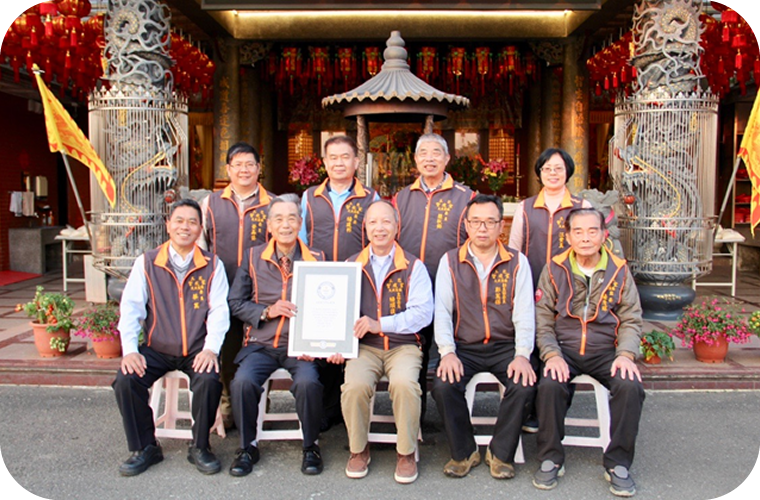


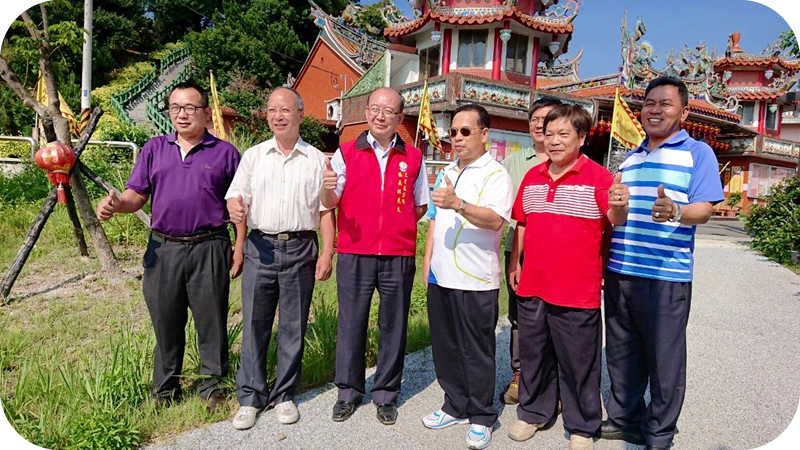

Pioneering Work and Hardships

I. Start-up (1899-1913)
1. Set the Incense burner
Wen-wu-sheng-miao of Chih-Cheng-Tang at Sanzhi (三芝智成堂文武聖廟) (hereinafter referred to as: this temple) broke the ground and open to the public 120 years ago. GuoShiding (郭石定), who was the sage of the township, the xiucai (秀才) of former Qing Empire and the scholar of sinology, has made a major contribution. Having learned the divine power of Five Holy En-Zhu of Guo-Sheng-Miao (古聖廟五聖恩主) at Tunsan of Dansui (淡水屯山), Mr.Kuo crossed mountains and waters to pay the tribute to the Xiangong Temple (仙公廟) of Chung-Liao Xing-Chung-Tang (忠寮行忠堂) at Dansui, supported by some good men on Xiao-Kee-lukng Street (小基隆街), as well as Zhang Ziqing (張子清)and Jiang Shengyuan (江盛元) in the township. He collected the incense and fetched the plaque of the Five Holy En-Zhu (五聖恩主公)and then returned home to worship.
On the 26th day of the Japanese Meiji 32 (1899), the fetched plaque was settled and enshrined in Putou Street (埔頭街) of Xiaojilong (小基隆), now the residence of ZenglinGanNiang (曾林甘娘) next to the Mazu Temple of Sanzhi Fu-cheng-Gong (三芝福成宮媽祖廟), and was named "Chih Cheng Tang".(智成堂)

Although it was temporarily enshrined in the residential building, it was open to the public to worship for Guan-sheng-di-jun, Fu-you-di-jun, Si-mingzheng-jun, Huo-luo-ling-guan, and Yue-wu-mu-wang. Gradually it became one of the main beliefs of xiaojilong Street. At that time, such worshipping was a major event in the old streets that it even won the recognition and support of many street vendors, scholars and businessmen.
The main helpers are: Yang Junde, GuoMusheng, ZengRuishu, ZengShiyue, GuoMingde, Huang Jianlong, Zhang Weitu, Zhang Yujue, Yang Weicheng and CaiChengjin.
For a time, the hall was full of people and talents. Both the xiao-lausheng (效勞生)and luan-sheng (鸞生) worshipped the Five Holy En-Zhu (五聖恩主). In the era of Japanese rule, the emphasis was on helping the world, promoting and inheriting Confucianism, supplemented by the principles of Buddhism and Taoism, and retaining the lifeline of Han culture.
2. Writing Scriptures and Saving the World
In this year (1900), GuoMusheng (郭木生) was zhengluansheng (正鸞生);GuoShiding was the head and Assistant luan(副鸞);Yang Weicheng was the assistant luansheng (副孿生); Zhang Weitu(張維塗) and Guo Mingde (郭明德)were left luansheng (左孿生), Yang Zaoyu (楊藻錙)and Guo Qishui (郭淇水)were right luansheng (右孿生). From April to October, day and right, they appealed to the deities they worshipped to make a descent. After spending more than half a year, the chapter 8 of "Zheng Yi BaoJian" (節義寶鑒)with a theme on "Righteousness, Heart, Repair, Body, Restraint, Self, Rest, and Rite" was finished. Such are the teachings by the celestial deities to the ordinary people that there should be more good deeds in daily life in order to become a deity and be included in the immortal class. After 14 years of Flying Phoenix Writing (扶鸞), there were many believers and more services, and the original place was no longer sufficient. The leader of the temple decided to build a new temple.




In the 2nd year of Dazheng (1913), the liquidation of the temple fund was carried out and then the temple was divided into two groups: Xiaojilong (小基隆)and Xiban (錫板). the Five Holy En-Zhu (五聖恩主) temporarily stayed in the residence of Zhang Ziqing at Xiaojilong; GuoShiding and others went to the Xiban to set up a new temple.


II. Establishing the Temple (1913-1969)
1. The choice of land
After the temple was divided into two places, GuoShiding, Yang Junde(楊峻德), and Yang Yuanzhang(楊元章), who all advocated setting up a new temple, naturally took up the responsibility of establishment. They invited Master Yang-Jiiao-Pin to choose the land. Finally, the lower reaches of the Xiban River, a feng-shui(風水) treasure of the “snail vomiting meat”(田螺吐肉) was discovered. Having reached agreement among them, a temple was set up in the southwestern direction after assessment by Yang Yuanzhang.
The temple is backed by a circular hill shaped like a "snail" in the village of Xiban. The temple base is located in the flat land that extends forward in the hills. It looks like the snail is "spiting the meat." In front of it, theXiban brook that passes through the shackles symbolizes that the snails stick out their tongues while laying them in the brook water for years. The snails thereby get nourished and overall the place becomes a treasure area.
Not only that, the two mountains on the left side of the temple are shaped like guards of two lions walking together". On the right side of the plain, the Xiban creeks flow through, slowly into the sea. The sea mouth, however, was not seen. Overall it is as if "the turtle snake guards the water mouth." Although the Xiban water was in a quick flow, water has been kept so as to nurture local talents and preserve local wealth, from generation to generation and endless.
After more than a year of land selection and construction, the foundation was finally laid in the 3rd year of Taisho (1914) and completed on November 16 – a wide, elegant, and building. In the era of Japanese occupation, the address of the temple was: Zhi-lan, San-bao, Danshui-jun, San-zhi-zhuang, Xiban, Haiwei (current site: Haiwei 17 Neighborhood 5, VilliageXibanli, Sanzhi District, New Taipei City). The current name Chih-Cheng-Tang was derived from this moment.
Immediately after its establishment, the Five Holy En-Zhu were invited and the incense were burnt in a grand ceremony. Chih-Cheng-Tang then became one of the most important Wu Enzhu beliefs in the township, and one of the most representative "En-Zhu Temples" in Northern Taiwan.


2. Training and Admonishment
When the hall was completed, GuoShiding, who was attributed for the establishment and enshrining of Five-Holy En-Zhu, was invited as the first lord (1913-1917). He desired to continue to save the world, but lamented about not having good luansheng to help him.
In the 4th year of Taisho (1914), Yang Mingji(楊明機), 16 years old and the son of Yang Yuan-zhang, was recommended by respectful elders of the township to offer assistance. Together with Yang Jun-de, who was the younger brother of Yang Shang-Chin(楊善慶), both came to the hall to accept the "admissions" and training.
As a Christian missionary, Yang’s father did not believe that his son could be chosen by the deities, then taught and enlightened to become a good spirit writer. Unexpectedly, there was a miracle. After four months of training, Yang Mingji got the blessing of En-Zhu(௮Ԇ獍) and the apocalypse. Not only could he write down scriptures through séance, but he began to help the hall and save the world.
At this time, a "new star" in this hall came to light, and it also changed the faith of Yang’s father. From the Christian faith, he changed to be the servant of En-Zhu. In the next 40 years, Yang Mingji wrote 10 scriptures through séance with the deities, proving that he was one of the most outstanding spirit writers in Taiwan during Japanese colonial and KMT governance.
On the occasion of Yang Mingji's gradual emergence, GuoShiding passed away. A local landlord and scholar of sinology, Yang Jundede took over and became the second lord (1917-1939) in the 6th year of Taisho (1917). He took over the important task of spirt writing in the 8th year of Taisho (1919) in July. Yang Mingji was still the main writer, and Yang Shanqing was the assistant.



Having performed spirit writing for more than 100 days, the celestial deities made a descent to the hall. The second book through spirit-writing, "Good Rules for Salvation" (救世良規) not only promotes the belief of EnZhu, but also enhances the reputation of the hall. Since the leaders of this hall were all Confucian scholars, the poems and the texts of Confucianism and moral have been written down through spirits to admonish the people of the world. In order to worship Confucius, it was in the 9th year of Taisho (1920) and under the leadership of Yang Junde, in accordance with the rules set up by Confucius Temple or Wenchang Temple(文昌祠), the plaque with inscription of "DachengZhisheng Ancestral Master Confucius" (大成至聖先師孔子牌位)was placed for the worship of the students and believers.
In order to do good deeds, Yang even created the "Sanzhi-Zhuang Charity Association" (三芝庄慈善會)in the first year of the Showa era (1926), and engaged in the religious charity to relieve poverty, improve customs, and social education. At this time, for Yang Mingji, he has thought about developing outward and looking for a wider world of ancestral halls. He decided to come to Taipei in the 14th year of Taisho (1925) to establish the Zang Xiu Hall(贊修宮). In the 4th year of the Showa era (1929), he once again cooperated with the hall to jointly write through spirits the book of "Qing XinBao Jing"(清心寶鏡). After that, the writing tasks of the hall were suspended due to lack of hands. Yang Junde died in the 14th year of the Showa era (1939), and the hall fell into a state of decline due to no successors.
3. Reorganization and Re-creation
It was not until November in 1951 after the Second World War that Zhang Tian-cai (張添財)and Yang Shang-Chin(楊善慶) proposed to reorganize the affairs of the hall. At that time, Du Jia-qi(杜家齊) and Du Li-shui(杜麗水) just finished their duty respectively as the mayor of Danshui. The sages of the hall then invited Du Jiaqi to be the third lord (1951-1959) and Du Lishui was the deputy lord, while hoping to rely on their prestige and connections to boost the image of the hall.
In order to restore the past glorious history of the hall, the Dus took a bold decision to invite the then prestigious leader of Confucianism, Yang Mingji, to be the leader of the hall. Yang, based on his prestige, summoned the luansheng of the northern, central and southern regions of Taiwan. From April to June of that year, " Liu-hey-uan"(六合皈元), an influential and highly praised book of spirit writing, was completed through their collaborative efforts. At this time, Yang Mingji was 57 years old. This book was the 10th book written by him, the third book created in this hall, as well as the last work of his life.
In addition, in August of the same year, the hall accepted the suggestion of Yang Mingji's for an "institutional" ancestral hall and re-published his book "Ru-Men-Ke-Fan"(猵槹ᑀ塅) written in 1936 (Showa 11). The book is quite rich in content in that it plans the interior installation of the Confucius ancestral hall, the procedures and music of the worshipping ceremony, the prayers and benedictions for the deities and the ancestors, and the scriptures for daily recitals.
This is a rare book of the Confucianism, and it also fulfills Yang Mingji’s dream who hopes to institutionalize the ritual and ceremony of worshipping En-Zhu. After the book was reprinted, the request for it increased so dramatically that it was hard to acquire for a time. This book has had a major impact on the halls in Taiwan and has once again raised the reputation of the hall.
In the 48th year of the Republic of China (1959), Zhang Tiancai succeeded as the fourth lord, continuing the tradition of predecessors to persuade people to do good. Combining the funds from the faithful public as well as from the spirit writers of the hall, the book “Jue Lu Jin Sheng”(覺路金繩) written by Yang in Donan in the 9th year of Showa (1934) was published.
III. Enlargement and Expansion (1969-1996)
1. Renovation, reconstruction
The time goes back to the 58th year of the Republic of China in 1969. It has been 55 years since the beginning of the hall, and the hall has been worn out. At this time, Xie Lu-yan(射盧燕), the mother of XieYongyu (謝永郁)who was an outstanding world-class golfer, worked in Zhongyi Temple(忠義廟) which was the Beigong branch of the Xin-Tien-Gong(行天宮). According to the old memories of respectful elders, she was a devout luansheng of the hall and was guided by the Master of the Xix-Tien-Gong, and came to help repair the hall.
A woman with a firm belief, Xie Lu-yan persevered in the construction project. Whenever the project was in a state of financial urgency, her outstanding son, XieYongyu would luckily won the monetary prize, as if she had been blessed by En-Zhu. Her son then sent some of the monetary prize to the mother, and then solved the urgent need for reconstruction. Such was a beautiful story in the history of the hall.
Xie Lu-yan engaged so seriously in the practice of repairing the hall that she moved the folks to participate in the event. To this day, the “mountain gate” (山門) that stands at the entrance of the hall bears her name as well as that of Yang Meijin(楊美津), Jiang Huamei(蔣華美) and Yang Jingzhi(楊敬治).
After more than three years of construction, the repair work of the main hall, the worship hall and the mountain gate were finally completed in the 61st year of the Republic of China (1972) on October 6. The hall was completely renewed. This construction also laid the basic scale of the current hall.


2. Republication & Register
In the 67th year of the Republic of China (1978), Yang Kuanyu(楊寬裕), who was the former villagers' representative of Sanzhi Township, was invited and became the fifth lord of the hall (1978-1984). The original lord of the hall, Zhang Tiancai, stepped down and became the vice lord for assistance.
In the 72nd year of the Republic of China (1983), this hall cooperated with Chih-Cheng Zhong-Yi-Gong of Sanzhi (財團法人智成忠義宮) to jointly convene believers at home and abroad to re-publish the first book of this hall "Zheng Yi BaoJian". Ni Wenya(倪文亞), the president of the Legislative Yuan at the time, and Yu Junxian(余俊賢), the president of the Control Yuan, respectively, cited the title of the book on the cover and its inside cover -- an interesting episode in the history of this hall.


In order to strengthen the organization of this hall, it then considered to apply to the government for the registration of a temple. On July 30 in the 73rd year of the Republic of China (1984), the system was changed from a relatively loose "manager" system to a "management committee" system, and was officially registered as a "legal temple".
The management committee then chose Yang Cainan(楊彩南), who was the 2th, 3rd, 5th, and 6th chief of the township, to serve as the first chairman of the reformed committee (1984-1988). He was also the chairman in the second and third sessions (1988-1996).



3. Additional construction
During Yang Cainan's appointment, he completed the transfer of the land, the renovation and expansion of the temple, the park and activity center of the temple, and the construction of the parking lot. To build a more sacred and secular space for the temple, and lay the foundation for large-scale activities in future.
First , he asked the landlords who promised to donate land and transfer the land to the temple. In the 76th year of the Republic of China (1987), the landlord Yang Kuanyu(楊寬裕) donated 212 pings, Yang Lijun(楊李呅) donated 97 pings, Yang Yuming(楊玉明) donated 12 pings, and Lin Zhu(林逐) donated 42 pings, totaling 363 pings. In the spring of next year, the name was engraved on the stone tablet, and was grateful forever.
Secondly, in the Republic of China in 1977 (1988), he called on the believers to donate money together, build the bell and drum towers of the left and right hatchbacks, and install electric clocks and drum equipment, and renovate the inner hall and worship pavilion. Finally, these constructions was completedat the end of the 1989.
After that, with the community construction plan of the Sanzhi Township Office, we got government subsidies. We also got temple members and believers donations to build a 200-step mountain trail, and a pavilion at the top of the dome. To tramsfer the "round hill" behind the temple to the park.
In response to the needs of the times, an increasing number of believers parked and increased the space for handling activities. Under the concerted efforts of the committee, chairman Yang decided to mobilize the believers again in the 84th year of the Republic of China (1995) to invest in the construction of the "activity center and parking lot".
When the news came out, it was echoed by local gentry, entrepreneurs and believers. In the short term, NT$5,380,000 was raised. In the same year, the construction was launched in March, and in December, the wide temple parking lot and the indoor activity center of about 400 pings on the ground floor were completed.
Before the construction,we fully considered the existing terrain and features in front of the temple. The main body of the building will be underground without destroying the principle of wide vision and feng shui(風水) in front of the temple.
This building across the Xiban River, extending forward, greatly increasing the space used for the temple. Since then, the temple has solved the problems of parking and handling various activities forever


IIII. Development (1996-2019)
1. Legitimatize
In the 85th year of the Republic of China (1996), Yang Kuanyu was the 4th chairman of the committee. (1996-2000). In the proposal of the standing supervisor of the committee, Zhang Cai-nan(張彩南), the meeting minutes and financial statements between year 73 and 89 of the Republic of China (1984-2000) were corrected according to law, and finally approved by the Taipei County Government in the Republic of China in 1989 (2000). The first management committee after reform was elected. Yang Xinnan(楊信男) was chosen to be the chairman and was re-elected between 2000-2010.

In order to cope with the advent of the computer era and the demand for marketing of this temple, in the 97th year of Republic of China (2008), the temple underwent a large-scale computerization. In addition to setting up official websites for marketing, computer software was also used to construct information such as that of believers, organizations, rituals, donations, and registrations, all of there changes facilitating the organization, the management of finance and ceremonies of the temple.
2. Open access
During the term of Yang Xinnan, the native of Yang Shun-fu (楊順復), a gentleman who lived Canada, got devoted to the activities of the temple in the 96th year of the Republic of China (2007) and was recommended to serve as the 5th chairman of the committee in the 99th year of the Republic of China (2010). Since then, he has made several reforms with his steadfast attitude, He has been re-elected as the chairman of the sixth and seventh session (2010-2019).
In order to make this temple more close to believers, the committee suggested to have this temple more accessible to the public. The committee decided to adjust the hardware of this temple and participate in many social, public welfare, religious and cultural activities.
In this part of the temple, the committee decided to reopen the temple in the 105th year of the Republic of China (2016) in March. In June of the same year, the seat was refurbished for the Tiangong furnace(天公爐). Let the appearance of this hall be more open; directly connect to the front of the temple, and extend to the right of the road to the right side of the road, the mountain gate of the temple. The temple building was awarded the New North City Government building license in March 2007 and became a legal temple.
In the social sector, in the 105th year of the Republic of China (2016), the committee was seen to participate in the first "Wanmin Watching Mazu Forum"(首屆萬民看媽祖論壇), and in the following year (2017), co-hosted the second " Dance with Guanggong Forum"(舞動關老爺論壇) with the local famous Guandi Temple and Taiwanese religious societies association (台灣宗教與社會協會) in an effort to enhance people’s affinity with Guandi .





3. Adoption of Green Spaces
In order to increase the greening of the area from the main gate to the yard of the temple, the temple applied and got approval from the Sanzhi District Office(三芝區公所) to adopt the 6,451 m2 of flat public open spaces along the banks of the Xiban River. On this ground, the temple planted and trimmed flowers and trees to make it a green belt. When the believer enters the gate, it is like entering the garden of the temple.



In the 107th year of the Republic of China (2018), the temple made best use of the temple yard, the surrounding roads and the adopted green spaces to organize an activity of “handwriting long life by thousands of people” as one kind of marketing of the temple. On July 7th, the temple was crowded with talents, including the deputy mayor of New Taipei City, HouYouyi(侯友宜), Li Sichuan(李四川) and the then Consultant for New Taipei City Government as well as the Chairman for the New Taipei City Taoism, Xie Rongshou(謝榮壽), Sanzhi District Mayor Lin Kewen(林克文) Chairman of Fucheng Community ZhengGuoxian(鄭國賢), and Xie Ruihuang(謝瑞煌), master of calligraphy. Through such convening, the committee was able mobilize believers, accommodating friends, institutions, schools, and organizations. There were about 2,433 men, women and children. On the scene 2,023 people were writing on their own red tiles with a brush. A testimony for themselves, it broke the record of 1,260 people in Outer Mongolia in 2017, and won the "Guinness World Records" affirmation with a certificate issued.

In the future, the temple is expected to set up a " long Life of Thousands of People" park in the adopted green space. The red tiles that bear the word "shou" long will be placed in it; making this park one of Sanzhi's special attractions.
Since this activity has been included in the world record, it is now written in the annals of the temple, and will be remembered by all visitors. When the park is built in the future, the participants are welcome to pay a revisit. When a believer comes to the temple, he can also find in the park the red tiles he participated in and created the history of the "Guinness World Records"(金氏世界紀錄).





